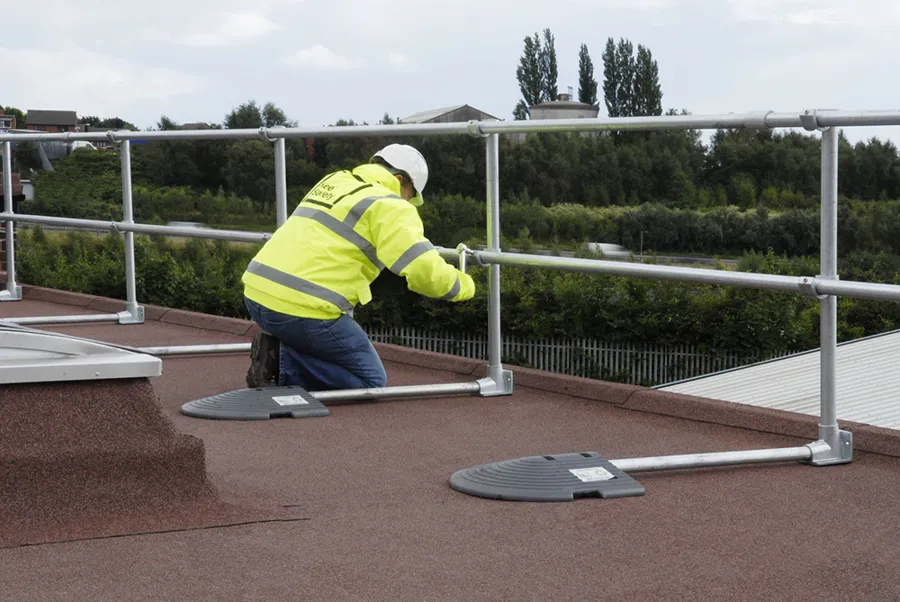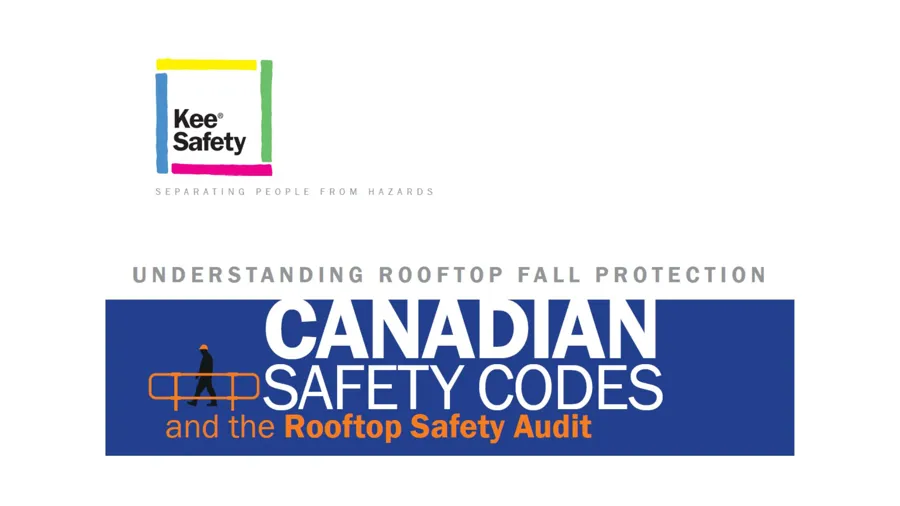
You are visiting the Canada Kee Safety website from United States. Would you like to go to the United States site?

Working at heights is commonplace in the construction industry, where three meters is considered the threshold for requiring fall protection. Construction sites are typically complex and demand a comprehensive approach to protecting workers. How does a company provide such a framework?

A thriving culture is inclusive.
A workplace where concern for safety permeates how all employees approach their jobs starts at the top. Ownership and upper management must have an active concern for safety. They must make the investments needed to create the safest working environment possible.
Yet, “starts at the top” is only where it starts. Every construction site has its challenges. All workers should be empowered to speak up about unsafe conditions and potential hazards. They should also take management’s efforts seriously and comply with the training provided and safety procedures enacted.
Regulatory bodies define two critical types of personnel at the crux of ensuring safety in the workplace, the “competent person” and “qualified person.”
As defined by the Canadian Centre for Occupational Health & Safety (CCOHS)—drawing on provincial and federal legislation—a competent person has the knowledge, training, and experience to identify a hazard in the workplace and can act on corrective measures to perform the assigned task safely.
A qualified person is someone who has a recognized degree, certificate, or professional standing and has extensive knowledge, training, and experience to solve or resolve problems relating to worksite hazards.
From a trench dug for a building foundation to the rafters on a roof, a construction site has many potential risks for injury from a fall. Competent and qualified personnel are responsible for assessing the hazards. A formal safety audit can help.
Step-by-step, a safety audit will evaluate the risks and hazards—including a roof inspection—review worker routines, submit a hazard survey report, and recommend compliant fall protection systems and other safety solutions.
A construction site is a dynamic, ever-changing workplace, so eliminating a hazard can be challenging. Access to a dangerous area might be eliminated one day but opened the following day for the next project phase.
“Substitution” is an effective way to mitigate the hazard by replacing it with a less dangerous activity; for example, can any work be performed at ground level? Can the work be delayed until safety controls are put in place?

When working at heights, there is no excuse not to have compliant fall protection equipment. A roof perimeter guardrail system is preferred because it is a collective structure that projects several workers simultaneously. Such systems can be temporary for construction and maintenance or permanent.
When a rooftop safety railing system is not in place, Personal Protective Equipment (PPE) is required. This includes harnesses, lanyards, and lifelines with anchorages with a Safety Factor of 2 for regulatory compliance.
Investing in fall protection systems and equipment is the first step. Before workers take another step out to a dangerous height, they must be trained. Even with passive guardrail systems, they need to understand the safety zones on a rooftop and hazards such as access points, roof openings, and obstacles.
PPE is more complex and requires more intensive training by professional instructors or competent or qualified personnel.
Although guardrail systems are designed to be permanent and virtually maintenance-free, a periodic assessment that all components are secure and rust-free is important.
PPE should be inspected before every use for potential problems from wear and tear (e.g., frayed edges, broken strands, loose grommets). Any defective component should be replaced or upgraded immediately.
At the turn of the century, only a small percentage of commercial, institutional, and industrial buildings used compliant guardrails and other collective fall protection equipment. Workers often relied exclusively on PPE.
Although collective systems are now widely used, PPE is still prevalent and sometimes the only solution available on construction sites. During the 20+ years that collective systems gained popularity, PPE systems and equipment improved.
A framework for safety does not consider just the past and present for fall protection solutions. Manufacturers and suppliers constantly innovate to improve and expand their safety products and equipment. Trade media cover the latest in regulations and safe practices for their livelihoods. Construction employees that keep themselves informed invariably provide the smartest safety solutions.


What experts look for when performing a rooftop safety audit and how to improve worker safety with solutions that exceed OH&S compliance.